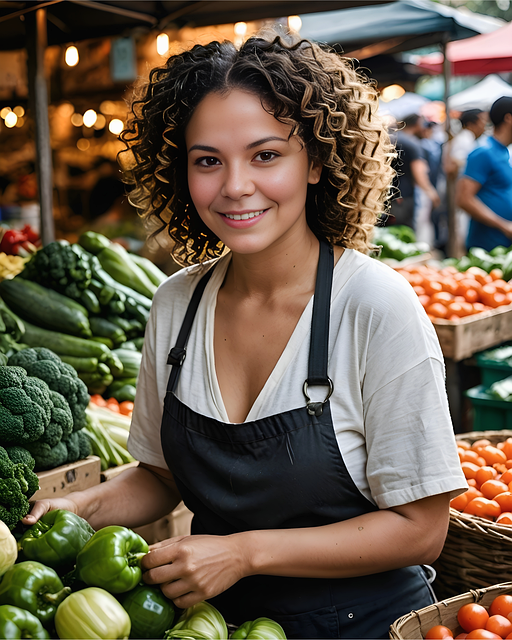Food allergies and intolerances significantly impact daily life, requiring a deep understanding of their complexities. Allergies involve the immune system's misidentification of food proteins, leading to histamine release and symptoms from mild itching to severe anaphylaxis. Intolerance is digestive, often caused by enzyme deficiencies or sensitivities, resulting in abdominal pain, bloating, and gastrointestinal discomfort. Local Food Delivery and Meal Preparation services offer personalized options for these dietary restrictions, revolutionizing access to safe and delicious meals. These services use specialized techniques, training, and dedicated utensils to prevent cross-contamination, ensuring individuals with allergies and intolerances can enjoy a diverse range of cuisines without compromising their health. Effective communication between patrons and service providers is crucial, with clear statements of dietary requirements to avoid health issues. The future of food accommodation for allergies and intolerances is shaped by technology, with platforms integrating allergen filters, personalized meal preparation apps, and detailed menu information, fostering an inclusive culinary environment.
In a world where dietary preferences and restrictions are increasingly diverse, understanding and accommodating food allergies and intolerance is more critical than ever. This comprehensive guide delves into the complex landscape of food sensitivities, exploring topics like understanding allergies, the rise of local food delivery services catering to special needs, effective meal preparation techniques, and best practices for open communication with restaurants. We also examine initiatives fostering an inclusive food community and future trends, including technology’s role in accommodating dietary restrictions. By embracing these insights, we can create a more welcoming culinary environment for everyone, from those with allergies to enthusiasts of local food delivery and meal preparation.
- Understanding Food Allergies and Intolerance: A Comprehensive Guide
- The Rise of Local Food Delivery Services: Catering to Special Dietary Needs
- Meal Preparation Techniques for Safe and Delicious Dining Experiences
- Effective Communication: Transmitting Dietary Requirements to Restaurants
- Building an Inclusive Food Community: Initiatives and Best Practices
- Future Trends in Accommodating Dietary Restrictions: Technology's Role
Understanding Food Allergies and Intolerance: A Comprehensive Guide

Food allergies and intolerance can significantly impact an individual’s daily life, making it crucial to have a comprehensive understanding of these conditions. This guide aims to shed light on the differences between food allergies and intolerance, their causes, symptoms, and how they are managed. Knowing what triggers these responses is essential for individuals looking into local Food Delivery and Meal Preparation services that cater to special dietary needs.
Food allergies occur when the immune system mistakenly identifies a specific food protein as harmful, releasing histamine and other chemicals in response. This reaction can cause various symptoms, from mild (such as itching or hives) to severe (anaphylaxis). On the other hand, food intolerance is typically linked to digestive issues rather than the immune system. It often results from difficulty digesting certain foods due to enzyme deficiencies or sensitivities to specific food components, leading to symptoms like abdominal pain, bloating, and gastrointestinal distress. Effective management for both involves avoiding the problematic foods, which can be facilitated by reliable local delivery services that offer personalized meal preparation options tailored to accommodate allergies and intolerance.
The Rise of Local Food Delivery Services: Catering to Special Dietary Needs

The rise of local food delivery services has significantly transformed the way people access meals, particularly for those with special dietary needs. These platforms offer a convenient solution for individuals managing food allergies and intolerances, providing them with a wider variety of options tailored to their specific requirements. Many delivery apps now include filters and customization features that allow users to specify dietary preferences or exclusions, ensuring they receive suitable food choices.
Meal preparation services also play a pivotal role in catering to diverse dietary needs. These businesses specialize in creating customized meals, offering alternatives for common allergens and taking into account various dietary restrictions. By leveraging technology and a growing awareness of special dietary requirements, local food delivery and meal preparation services have become indispensable resources, empowering individuals with allergies or intolerances to enjoy a convenient yet healthy dining experience.
Meal Preparation Techniques for Safe and Delicious Dining Experiences

When accommodating food allergies and intolerance, local food delivery and meal preparation services play a pivotal role in ensuring safe and delightful dining experiences. These services employ specialized techniques to create meals that cater to diverse dietary restrictions while maintaining flavor and quality. From separate cooking areas for allergen-free foods to meticulous ingredient sourcing, these professionals ensure cross-contamination doesn’t occur.
Meal preparation involves rigorous cleaning protocols between different food types, using dedicated equipment and surfaces. This includes utilizing non-allergen utensils and containers, along with regular training for staff to stay informed about the latest dietary guidelines. By prioritizing safety and understanding individual needs, local delivery services make it possible for those with allergies or intolerances to enjoy a variety of cuisines without compromising their health or well-being.
Effective Communication: Transmitting Dietary Requirements to Restaurants

When it comes to enjoying local food delivery or dining out, individuals with food allergies or intolerances may face challenges in communicating their dietary requirements effectively. This is particularly important when exploring meal preparation options or placing orders for local food delivery services. Clear and concise communication can ensure that your meal meets your specific needs without compromising your health.
Restaurants often have staff trained to accommodate special dietary requests, but it’s crucial to be direct and specific about your allergies or intolerances. Many restaurants now provide allergy information on their menus, making it easier for patrons to make informed choices. When ordering local food delivery or discussing meal preparation, don’t hesitate to ask about ingredients, cooking methods, and cross-contamination risks. Effective communication fosters an inclusive dining experience, allowing you to enjoy delicious meals while managing your dietary restrictions with ease.
Building an Inclusive Food Community: Initiatives and Best Practices

Building an inclusive food community requires a concerted effort to cater to diverse dietary needs, especially in relation to food allergies and intolerances. Initiatives focused on local food delivery and meal preparation play a pivotal role in this journey. Many restaurants now offer dedicated allergen-free menus, ensuring that individuals with specific food allergies can enjoy dining out without concern. These menus often include detailed information about ingredients, cross-contamination practices, and cooking methods, providing peace of mind for customers.
Local food delivery services have also embraced inclusivity by allowing customers to specify dietary restrictions during ordering. Many platforms now offer filters and options for common allergens, enabling users to choose restaurants and meals that align with their needs. Additionally, meal preparation classes and workshops focused on allergy-friendly cooking can empower individuals to create safe and delicious meals at home. These practices collectively foster a more welcoming culinary environment, where everyone can participate and enjoy the joy of sharing meals together.
Future Trends in Accommodating Dietary Restrictions: Technology's Role

The future of accommodating food allergies and intolerance looks promising with technology playing a pivotal role in revolutionizing how we approach dietary restrictions. Local Food Delivery platforms are increasingly incorporating features to cater to specific needs, allowing customers to filter options based on various allergens and ingredients. This not only simplifies the process for users but also ensures restaurants and delivery services provide accurate information about menu items.
Meal Preparation services are another area where technology is making a significant impact. Apps and online platforms now offer personalized meal plans tailored to individuals with specific dietary requirements, from gluten-free and dairy-free options to low-sugar and high-protein choices. These services not only help in managing allergies but also promote healthy eating habits, offering convenience and peace of mind for those with dietary constraints.
The growing awareness of food allergies and intolerances has prompted significant shifts in the culinary landscape. Local food delivery services have embraced this trend, offering tailored meals that cater to diverse dietary needs. Advanced meal preparation techniques ensure safe and delicious dining experiences for those with specific requirements. Effective communication between diners and restaurants is key to ensuring accurate transmission of dietary restrictions. Building an inclusive food community through initiatives and best practices fosters a welcoming atmosphere for everyone. As technology continues to evolve, it plays a pivotal role in future trends, making local food delivery more accessible and accommodating than ever before.



